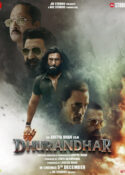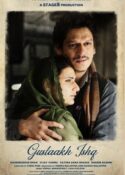 Michael Bay’s Pearl Harbor is said to be a faint inspiration for Sanjay Bhansali’s forthcoming Love & War. The war epic, released on May 25, 2001, recreated the attack on Pearl Harbor in a pulp format.
Michael Bay’s Pearl Harbor is said to be a faint inspiration for Sanjay Bhansali’s forthcoming Love & War. The war epic, released on May 25, 2001, recreated the attack on Pearl Harbor in a pulp format.
In a key sequence of Pearl Harbor, President Roosevelt tells his cabinet that America must attack Japan in retaliation for the attack on Pearl Harbor. Everyone looks askance. So what does the President do? He throws a metaphysical tantrum. He raises himself out of his wheelchair and bellows, “Don’t tell me it can’t be done.”
Well, it can, actually. The Pearl Harbor incident is something that America and Hollywood just can’t get out of their system. There have been other films on the subject, like Richard Fleischer’s Tora Tora Tora, but none so flashily comic book. Pearl Harbor can comfortably be divided into three parts—the romantic triangle, the attack on Pearl Harbor, and the retaliatory attack on Japan. The characters thread their way through Randal Wallace’s skilful epic soap opera.
The two friends Rafe McCawley (Ben Affleck) and Danny Walker (Josh Hartnett) and the girl they both love, Evelyn (Kate Beckinsale), are chewing gum versions of Burt Lancaster, Montgomery Clift, and Deborah Kerr in From Here To Eternity. When the film opens , director Michael Bay captures his protagonists and their soldier colleagues as though the battle field were a version of Riverdale High School in the Archies comicbooks. The disturbing feeling of war being treated as a game returns when we see the two bosom buddies Rafe and Danny bombarding the Japs like kids in a video parlour. Just goes to prove. You just can’t keep Top Gun away from films that feature charismatic young pinup stars.
Director Michael Bay who started his career with that cops-buddy-buddy comedy Bad Boys has dabbled in epic filmmaking in Armageddon with sizeable success. Confronted with history Bay seems to take the subject too lightly not because he doesn’t respect the processes of history, but because it’s the only way he knows how to handle the truth about American valour.
A mocking heroism underscores the film’s obvious pitch of patriotism. The central triangle with two brave and handsome soldiers battling over the nurturing and nursing beauty is like Raj Kapoor’s Sangam all over again.
Despite the technical velocity and the breathtaking war sequences on ground and air, Pearl Harbor leaves us with an empty feeling at the end. It isn’t as vacuous as Richard Attenborough’s In Love & War. But it’s nowhere near the great war epics of Hollywood like Steven Spielberg’s Saving Private Ryan which focuses on the pain suffering humiliation and agony of war.
Pearl Harbor races back in time to those good old heroic war films where the men fought bravely at the front while the women wrung their hands impatiently. Cliched patriotism? Perhaps. But enterprising and imaginative for resorting to those cliches that were abandoned by war films after the guns boomed in Navarone and the bridges shook over the River Kwai.
The production value is first-rate and the romantic triangle with its war backdrop is enjoyable while it lasts.








